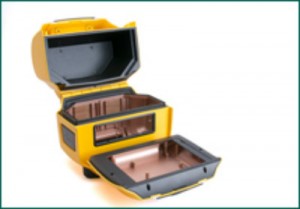To obtain a production-quality finish, some designers must paint cured cast urethane parts. It’s true that virtually any shade can be produced in a cast urethane part, but some projects may still require paint.

Like any paint project, preparation and understanding the properties of the surface are key components of achieving high-quality results. Cutting corners puts the project on the fast track toward “reject” status.
Determine the flexibility of the part
The most common issue with painting plastics involves the flexibility of the material that can lead to cracks if the wrong paint is used. Avoid paints made for rigid surfaces. Automotive paint is often a good choice.
Create a good part
If the cast urethane surface feels oily, the part was not made right. Urethane parts should be dry and smooth if given enough time to cure. Paint won’t stick to “oily.”
Clean, it’s easy
Surfaces to be painted must be clean. Make sure your part is free from contaminants that may have found their way onto the surface following production. Warm, soapy water will work.
Sanding
Sanding with fine-grit sandpaper will open small pores in the surface and promote a stronger bond between the plastic and the paint.
Prime and Paint
Apply a coat of automotive primer to all the surfaces and then allow the primer ample time to dry completely before painting. Priming is a crucial step needed to make sure that the part will be covered completely without any of the color from the part showing through.
Most experts agree that an automotive lacquer is the best paint for cast urethane, but you must follow the manufacturers’ guidance. The properties and application of a lacquer is much different than laying a coat of paint on your house.
Although this can seem like a laborious process, the end results will be worth the extra effort. Contact Product Development Solutions today for more information.
